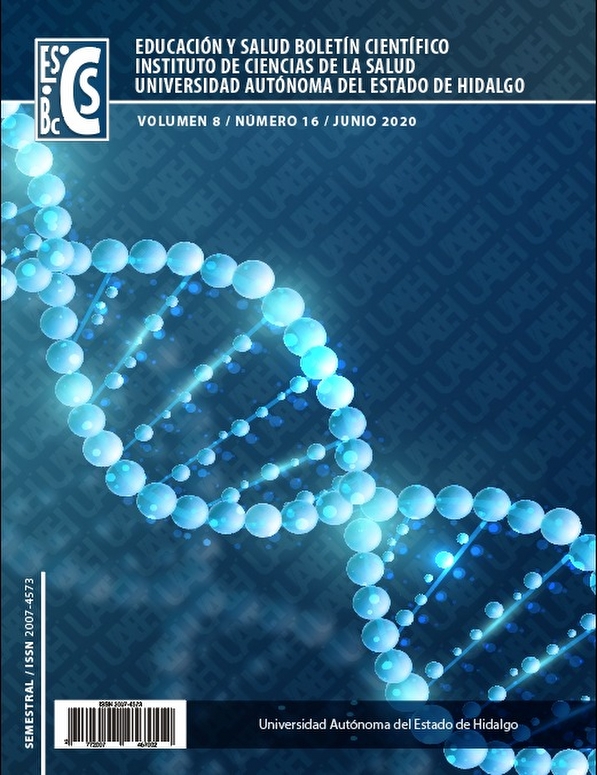Biological effects and traditional use of genus Croton. A systematic review
Abstract
Background
Since ancient times, human beings have had the need to seek natural alternatives to combat various diseases. The active ingredients of the genus Croton (family Euphobiaceae) are used as natural pharmaceutical alternatives in African, South Asia and South America traditional medicine. Specifically, Croton hypoleucus is used in Mexican traditional medicine for the treatment of stomachache, gastritis, cough and local infections. Therefore, the main objective of the present review is to show the biological activities and clinical uses of Croton.
Method
A PubMed, Scopus, Web of Science literature search was performing. We reviewed the experimental studies of in vitro and in vivo models of the components of different Croton species published from 1980 to 2019, where each article synthesizes the information on the efficacy and biological effects of each isolated compound.
Results
A total of 16 experimental studies were included. No experimental clinical study was found in the literature. Low to moderate cytotoxic activity against different cell lines was produced by some species of croutons. These effects were mostly attributed to diterpenoids, crotonides and mostly clerodanes. A pure extract of Croton hypoleucus demonstrated moderate hepatoprotective and antioxidant activity.
Conclusion
Literature indicates the possible mechanism of action of some biological activities of Croton compounds. However, the information available is scarce. Therefore, studies in different experimental models are needed to clarify the security and efficacy of its active components in order to have natural alternatives with the same or better effect that conventional medications.
Downloads
References
Molina Mendoza J, Galván Villanueva R, Patiño Siciliano A, Fernández Nava R. Plantas medicinales y listado florístico preliminar del municipio de Huasca de Ocampo, Hidalgo, México. Polibotánica. 2012; 34: 259- 291.
Gallegos Zurita M. Las plantas medicinales: principal alternativa para el cuidado de la salud, en la población rural de Babahoyo, Ecuador. An la Fac Med. 2016; 77(4): 327-32.
Ocegeda S, Moreno E, Koleff P. Plantas utilizadas en la medicina tradicional y su identificación científica. Biodiversitas. 2005; 62: 12- 15.
Fuentes Cervantes I, Villavicencio Nieto M, Pérez Escandón B. Plantas medicinales de Omitlán, Hidalgo, México. Estudios científicos en el estado de Hidalgo y zonas aledañas. 2013; 17: 129.
Gordillo M. Los géneros de la familia Euphorbiaceae en México (parte A). An del Inst Biol Ser Botánica. 2002; 73: 155- 196.
Puebla P, Guerrero MF, Correa SX. Flavonoides del Género Croton. Cienc. Quim. Farm. 2004; 33: 59-69.
Velázquez-Jiménez R, Vargas-Mendoza D, Gayosso-de-Lucio JA, González-Montiel S, Villagómez-Ibarra JR. Three novel epoxy-clerodanes bearing a furan ring from Croton hypoleucus. Phytochem Lett. 2018; 24: 21-26.
Xu WH, Liu WY, Liang Q. Chemical constituents from croton species and their biological activities. Molecules. 2018; 23(9): 2333.
Li R, Morris-Natschke SL, Lee KH. Clerodane diterpenes: Sources, structures, and biological activities. Natural Product Reports. 2016; 33: 1166- 1226.
Qiu M, Cao D, Gao Y, Li S, Zhu J, Yang B, et al. New clerodane diterpenoids from Croton crassifolius. Fitoterapia. 2016; 108: 81- 86.
Yuan QQ, Tang S, Song W Bin, Wang WQ, Huang M, Xuan LJ. Crassins A-H, diterpenoids from the Roots of Croton crassifolius. J Nat Prod. 2017; 80: 254- 260.
Tian JL, Yao GD, Wang YX, Gao PY, Wang D, Li LZ, Song SJ. Cytotoxic clerodane diterpenoids from Croton crassifolius. Bioorganic and Medicinal Chemistry Letters. 2017; 27: 1237- 1242.
Wang GC, Li JG, Li GQ, Xu JJ, Wu X, Ye WC, et al. Clerodane diterpenoids from croton crassifolius. J Nat Prod. 2012; 75: 2188- 2192.
Wang GC, Zhang H, Liu HB, Yue JM. Laevinoids A and B: Two diterpenoids with an unprecedented backbone from Croton laevigatus. Org Lett. 2013; 15: 4880- 4883.
Yang L, Zhang YB, Chen LF, Chen NH, Wu ZN, Jiang SQ, et al. New labdane diterpenoids from Croton laui and their anti-inflammatory activities. Bioorganic Med Chem Lett. 2016; 26: 4687- 4691.
Liu CP, Xu JB, Zhao JX, Xu CH, Dong L, Ding J, et al. Diterpenoids from croton laui and their cytotoxic and antimicrobial activities. J Nat Prod. 2014; 77: 1013-1020.
Bao H, Zhang Q, Ye Y, Lin L. Naturally occurring furanoditerpenoids: distribution, chemistry and their pharmacological activities. Phytochemistry Reviews. 2017; 16: 235- 270.
García A, Ramírez Apan T, Cogordan JA, Delgado G. Absolute configuration assignments by experimental and theoretical approaches of ent -labdane- and cis - ent -clerodane-type diterpenes isolated from Croton glabellus. Canadian Journal of Chemistry. 2007; 84: 1593- 1602.
Pudhom K, Sommit D. Clerodane diterpenoids and a trisubstituted furan from Croton oblongifolius. Phytochem Lett. 2011; 4: 147- 150.
Kitazawa E, Sato A, Takahashi S, Kuwano H, Ogiso A. Novel Diterpenelactones with Anti-peptic Ulcer Activity from Croton sublyratus. Chem Pharm Bull. 1980; 28: 227- 234.
Graikou K, Aligiannis N, Skaltsounis AL, Chinou I, Michel S, Tillequin F, et al. New Diterpenes from Croton insularis. J Nat Prod. 2004; 67: 685-688.
Addae Mensah I, Waibel R, Achenbach H, Muriuki G, Pearce C, Sanders JKM. A clerodane diterpene and other constituents of Croton membranaceus. Phytochemistry. 1989; 28: 2759- 2761.
Pan Z, Ning D, Wu X, Huang S, Li D, Lv S. New clerodane diterpenoids from the twigs and leaves of Croton euryphyllus. Bioorganic Med Chem Lett. 2015; 25: 1229- 1332.
Azab A, Nassar A, Azab AN. Anti-inflammatory activity of natural products. Molecules. 2016; 21: 1321.
Cordeiro KW, Felipe JL, Malange KF, Do Prado PR, De Oliveira Figueiredo P, Garcez FR, et al. Anti-inflammatory and antinociceptive activities of Croton urucurana Baillon bark. J Ethnopharmacol. 2016; 183: 128- 135.
Urrutia Hernández TA, Santos López JA, Benedí J, Sánchez Muniz FJ, Velázquez González C, De la O Arciniega M, Jaramillo Morales OA, Bautista M. Antioxidant and Hepatoprotective Effects of Croton hypoleucus Extract in an Induced-Necrosis Model in Rats. Molecules. 2019; 24(14): 2533.












